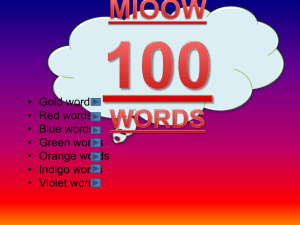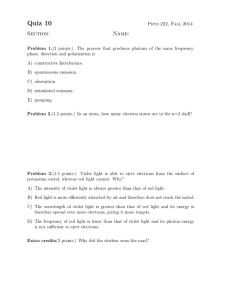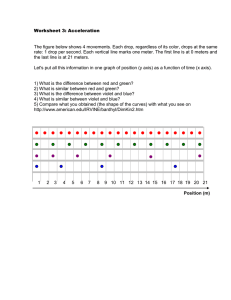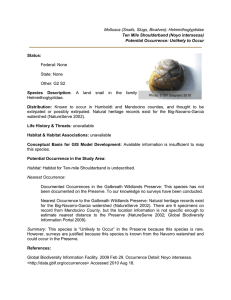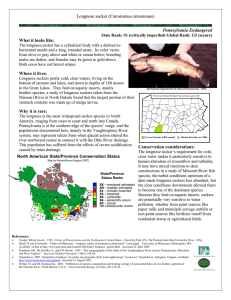Appalachian blue violet (Viola appalachiensis)
advertisement
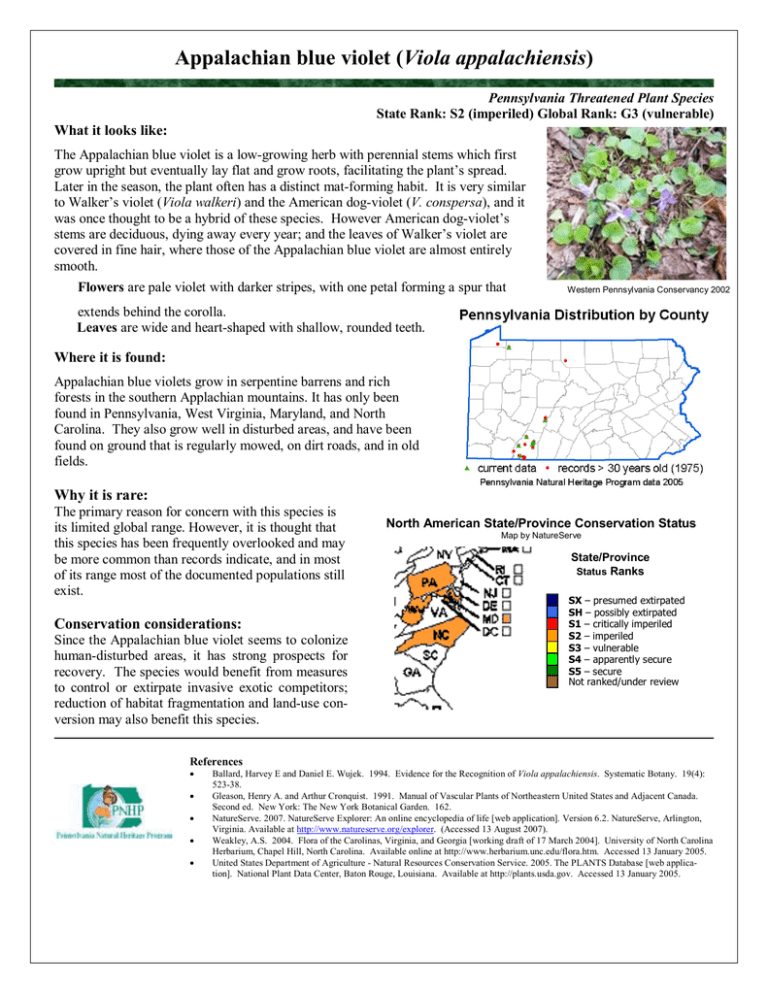
Appalachian blue violet (Viola appalachiensis) Pennsylvania Threatened Plant Species State Rank: S2 (imperiled) Global Rank: G3 (vulnerable) What it looks like: The Appalachian blue violet is a low-growing herb with perennial stems which first grow upright but eventually lay flat and grow roots, facilitating the plant’s spread. Later in the season, the plant often has a distinct mat-forming habit. It is very similar to Walker’s violet (Viola walkeri) and the American dog-violet (V. conspersa), and it was once thought to be a hybrid of these species. However American dog-violet’s stems are deciduous, dying away every year; and the leaves of Walker’s violet are covered in fine hair, where those of the Appalachian blue violet are almost entirely smooth. Flowers are pale violet with darker stripes, with one petal forming a spur that Western Pennsylvania Conservancy 2002 extends behind the corolla. Leaves are wide and heart-shaped with shallow, rounded teeth. Where it is found: Appalachian blue violets grow in serpentine barrens and rich forests in the southern Applachian mountains. It has only been found in Pennsylvania, West Virginia, Maryland, and North Carolina. They also grow well in disturbed areas, and have been found on ground that is regularly mowed, on dirt roads, and in old fields. Why it is rare: The primary reason for concern with this species is its limited global range. However, it is thought that this species has been frequently overlooked and may be more common than records indicate, and in most of its range most of the documented populations still exist. Conservation considerations: Since the Appalachian blue violet seems to colonize human-disturbed areas, it has strong prospects for recovery. The species would benefit from measures to control or extirpate invasive exotic competitors; reduction of habitat fragmentation and land-use conversion may also benefit this species. North American State/Province Conservation Status Map by NatureServe State/Province Status Ranks SX – presumed extirpated SH – possibly extirpated S1 – critically imperiled S2 – imperiled S3 – vulnerable S4 – apparently secure S5 – secure Not ranked/under review References Ballard, Harvey E and Daniel E. Wujek. 1994. Evidence for the Recognition of Viola appalachiensis. Systematic Botany. 19(4): 523-38. Gleason, Henry A. and Arthur Cronquist. 1991. Manual of Vascular Plants of Northeastern United States and Adjacent Canada. Second ed. New York: The New York Botanical Garden. 162. NatureServe. 2007. NatureServe Explorer: An online encyclopedia of life [web application]. Version 6.2. NatureServe, Arlington, Virginia. Available at http://www.natureserve.org/explorer. (Accessed 13 August 2007). Weakley, A.S. 2004. Flora of the Carolinas, Virginia, and Georgia [working draft of 17 March 2004]. University of North Carolina Herbarium, Chapel Hill, North Carolina. Available online at http://www.herbarium.unc.edu/flora.htm. Accessed 13 January 2005. United States Department of Agriculture - Natural Resources Conservation Service. 2005. The PLANTS Database [web application]. National Plant Data Center, Baton Rouge, Louisiana. Available at http://plants.usda.gov. Accessed 13 January 2005.
